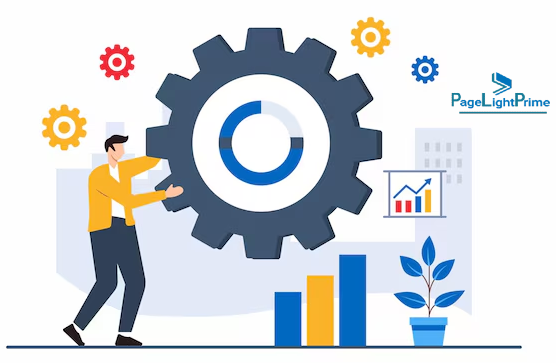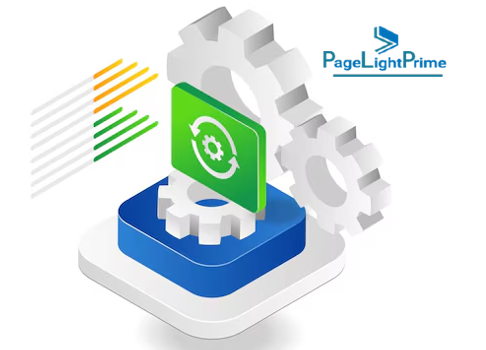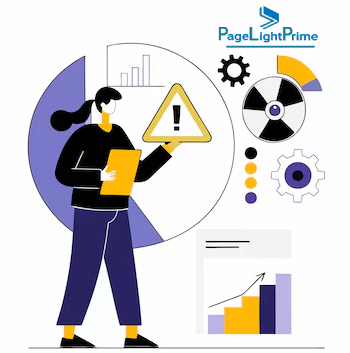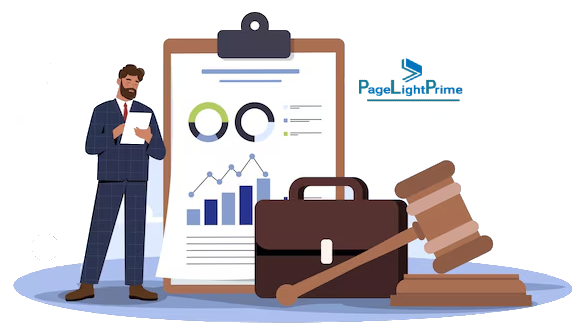Transforming Transaction Management into a Competitive Advantage for Law Firms
Effective transaction management is a cornerstone of success for law firms, directly impacting efficiency, client satisfaction, and risk reduction. By strategically enhancing transaction management practices—through streamlined processes, integrated technology, and optimized client communication—firms can differentiate themselves in the market. Let’s examine key areas that can help law firms elevate their transaction management to a competitive advantage.
Written by Knowledge Team, posted on Oct 28, 2024

Understanding Transaction Management in Law Firms
At its core, transaction management encompasses the planning, execution, and finalization of complex legal transactions, from real estate to mergers and acquisitions. However, when managed poorly, transaction processes can become cumbersome, leading to client dissatisfaction and missed opportunities. To turn transaction management into a competitive edge, firms need to focus on integrating technology, optimizing efficiency, managing risk, and ensuring a seamless client experience.
1 Efficiency and Process Optimization
Deal Timelines and Bottlenecks
How long does it take to close a typical deal, and what are the frequent causes of delays? By analyzing deal timelines and identifying bottlenecks, law firms can take proactive steps to streamline each phase. For instance, if document review frequently causes delays, preemptive strategies like templating standard documents or assigning dedicated review teams can be beneficial.
Process Streamlining
Transaction processes often include unnecessary or redundant steps. Map out each phase and identify opportunities to reduce manual workloads and introduce automation, where feasible. Streamlined processes mean faster deal closures and a more efficient workforce, allowing lawyers to focus on complex, high-value activities.

2 Technology and Automation Integration
Unified Technology Systems
Many law firms still rely on isolated systems for document management, communication, and project tracking, which can lead to inefficiencies and confusion. Adopting an end-to-end transaction management solution consolidates these tools into one comprehensive platform. With a single source of truth, all team members and stakeholders have easy access to the information they need, minimizing delays and miscommunication.
Automation of Repetitive Tasks
Repetitive tasks, such as document assembly, initial contract review, and compliance checks, can be automated to save time and reduce human error. Advanced legal document automation can assist in the document-intensive due diligence phase as well, making the review process faster and more reliable. For example, a firm that implemented AI-driven document analysis for due diligence significantly reduced its review time and achieved faster deal closures.

“
Case in Point: A mid-sized law firm integrated an AI-powered transaction management tool to automate compliance checks and contract review, reducing their deal timeline by 30%. This improved client satisfaction and freed up attorneys to focus on higher-value strategic activities, positioning the firm as a more attractive option in the competitive M&A space.
“
3 Risk Management and Due Diligence
Early Risk Identification
Risk assessment is essential to any successful transaction. By evaluating potential legal, regulatory, and financial risks early in the process, law firms can proactively address issues before they escalate. This could involve setting up standard risk assessment protocols or using AI tools to analyze legal and financial risks in contracts.
Accelerated Due Diligence
Due diligence is one of the most time-intensive parts of a transaction. Technology can streamline this step through automated document review, allowing attorneys to focus on higher-order concerns while still ensuring a thorough review. By expediting this process, firms can close deals faster, enhancing their reputation and competitive standing.

4 Visibility, Collaboration, and Client Experience
Real-Time Transparency
Providing clients and team members with real-time visibility into the deal process fosters transparency and reduces the chances of miscommunication. A dashboard or centralized tracking tool offers an accessible view of deal status, upcoming deadlines, and pending tasks, allowing all parties to stay informed and aligned.
Enhanced Collaboration
Transactions often involve multiple teams and stakeholders. Ensuring that your team collaborates effectively—by implementing shared digital workspaces, task management tools, or regular progress updates—can significantly reduce delays and ensure consistency across departments.
Client Communication and Satisfaction
Client communication is critical to a positive transaction experience. Keeping clients updated on progress through a legal client portal or regular status updates can alleviate anxieties and build trust. Firms that excel at keeping clients informed often see improved client loyalty and stronger referrals.

5 Legal and Compliance Considerations
Regulatory Compliance
Adhering to current regulatory standards is critical. Having tools in place to monitor relevant regulations and provide real-time alerts ensures that all transactions comply with the latest laws and requirements. For instance, automated compliance checkers can flag potential issues early, giving firms time to address them proactively.
Confidentiality and Data Security
Transaction management often involves sensitive information, making data security a top priority. Ensuring that all communication and document-sharing platforms are secure, encrypted, and access-controlled is essential. Strong data security protocols protect client data and reinforce trust, which is especially important in high-stakes transactions.

Implementing an Optimized Transaction Management System
Transitioning to a more competitive, efficient transaction management approach involves a series of targeted steps to address each of the above areas. Here’s how to begin:
Evaluate Current Processes
Conduct an internal review of existing transaction management practices to identify inefficiencies and bottlenecks. This assessment can reveal areas where technology, automation, or process improvements can make a substantial impact.
Choose Integrated Technology Solutions
Select law firm practice management software that consolidates key functions into one system. A comprehensive transaction management platform can enhance accessibility and collaboration while reducing time spent toggling between tools.
Automate Key Tasks
Look for opportunities to automate repetitive tasks. For instance, document generation and compliance checks can often be automated, reducing the risk of human error and expediting the transaction process.

Improve Collaboration and Visibility
Ensure that your team has access to shared workspaces, dashboards, and collaboration tools to stay informed and aligned. A centralized system makes it easier to monitor deal status, assign tasks, and keep everyone up to date.
Enhance Client Communication
Establish clear, transparent client communication practices. Use client portals or periodic updates to keep clients informed at each step of the process, fostering trust and engagement.
Provide Ongoing Training
Once new systems and processes are in place, invest in ongoing training for team members. A well-informed team is more likely to use the tools effectively and take advantage of the full potential of optimized transaction management.

Conclusion
“
In the fast-paced legal landscape, effective transaction management offers law firms a unique opportunity to differentiate themselves. By leveraging technology, automating repetitive tasks, and focusing on client experience, firms can reduce delays, mitigate risks, and enhance transparency. An integrated, end-to-end solution creates a single source of truth, ensuring consistent, secure, and efficient management of each transaction phase.
Firms that adopt a streamlined transaction management process will be better positioned to deliver efficient, client-centered services that meet the highest industry standards—ultimately giving them a valuable competitive edge in the legal market.
“
General Questions: (FAQ)
What are the specific challenges and considerations for smaller law firms when implementing transaction management?
For smaller law firms, budget constraints and limited staff resources are common challenges. Choosing a scalable, customizable solution that aligns with the firm’s budget and growth goals is key. Smaller firms may benefit from focusing on automation for repetitive tasks and opting for cloud-based systems that minimize upfront infrastructure costs. Ensuring staff is trained and able to use the new system effectively is another critical consideration.
How can law firms measure the success of their transaction management initiatives?
Success in transaction management can be measured by tracking key performance indicators (KPIs) such as reduced deal timelines, error rates, client satisfaction scores, and the volume of closed transactions. Monitoring these KPIs over time helps firms determine whether the system is improving operational efficiency, risk management, and client experience. Regular feedback from both clients and internal teams is also valuable for gauging effectiveness and identifying areas for improvement.
Specific Questions: (FAQ)
How can AI be used to improve the accuracy and efficiency of due diligence in M&A transactions?
AI enhances due diligence by automating the review and analysis of contracts, financial records, and other critical documents. AI-driven tools can quickly identify patterns, flag anomalies, and cross-check information against predefined criteria, ensuring greater accuracy and reducing the risk of oversight. These tools are especially useful in M&A, where large volumes of data need to be reviewed within tight timeframes, helping firms conduct thorough due diligence faster and more effectively.
What are the best practices for using client portals to enhance communication and collaboration in complex transactions?
Best practices for client portals include ensuring ease of use, offering real-time updates, and securing sensitive information. Portals should allow clients to view the status of transactions, access important documents, and communicate with their legal team. Setting up automated notifications for key milestones can keep clients informed, while ensuring secure access protocols protect sensitive data. A user-friendly portal can strengthen client trust and streamline collaboration in complex transactions.
How can law firms ensure that their transaction management systems comply with data privacy and security regulations?
To ensure compliance, law firms should choose transaction management systems that meet industry security standards, such as encryption, secure access controls, and audit trails. Regularly updating software to meet current data privacy regulations, conducting frequent security audits, and training staff on data protection, best practices are also essential. Partnering with a reputable vendor who stays informed on the latest regulations helps maintain compliance and client confidentiality throughout the transaction process.
